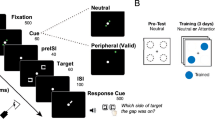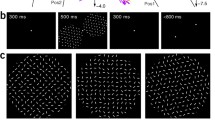Abstract.
We investigated the roles of feedback and attention in training a vernier discrimination task as an example of perceptual learning. Human learning even of simple stimuli, such as verniers, relies on more complex mechanisms than previously expected – ruling out simple neural network models. These findings are not just an empirical oddity but are evidence that present models fail to reflect some important characteristics of the learning process. We will list some of the problems of neural networks and develop a new model that solves them by incorporating top-down mechanisms. Contrary to neural networks, in our model learning is not driven by the set of stimuli only. Internal estimations of performance and knowledge about the task are also incorporated. Our model implies that under certain conditions the detectability of only some of the stimuli is enhanced while the overall improvement of performance is attributed to a change of decision criteria. An experiment confirms this prediction.
Similar content being viewed by others
Author information
Authors and Affiliations
Additional information
Received: 23 May 1996 / Accepted in revised form: 16 October 1997
Rights and permissions
About this article
Cite this article
Herzog, M., Fahle, M. Modeling perceptual learning: difficulties and how they can be overcome. Biol Cybern 78, 107–117 (1998). https://doi.org/10.1007/s004220050418
Issue Date:
DOI: https://doi.org/10.1007/s004220050418




